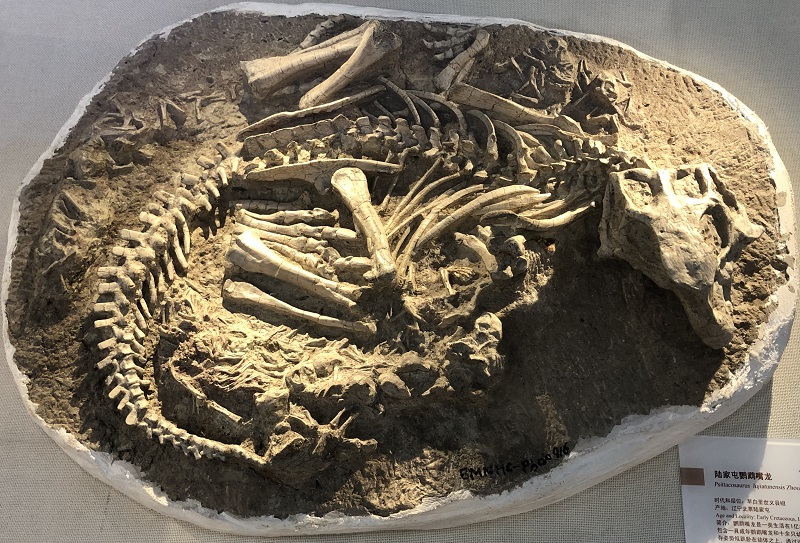BH Staff | June 1, 2023
Age and Locality: Early Cretaceous, Liaoning Province.

The Psittacosaurus lujiatunensis is a species within the Psittacosaurus genus, which is part of the early ceratopsian dinosaur family. The name “Psittacosaurus” translates to “parrot lizard,” a reference to the distinct beak-like structure on its face that resembles that of a parrot. The specific name, lujiatunensis, refers to the Lujiatun Beds of the Yixian Formation in Liaoning, China, where the fossils of this species were discovered.
Psittacosaurus lujiatunensis lived during the Early Cretaceous period, approximately 123 million years ago. This period is known for a significant diversification of dinosaur species, and the Psittacosaurus genus is among the most well-documented with numerous specimens found across Asia.
The Lujiatun Beds have provided exceptionally well-preserved fossils, including those of Psittacosaurus lujiatunensis, allowing scientists to study in detail the anatomy, behavior, and ecology of these early ceratopsians. Psittacosaurus lujiatunensis, like other species in its genus, was a small to medium-sized herbivore, characterized by its bipedal stance, long legs for fast running, and a powerful beak for clipping vegetation.
One of the most remarkable aspects of Psittacosaurus lujiatunensis and its relatives is their social behavior. Evidence from fossil sites suggests that these dinosaurs lived in groups, possibly indicating complex social behaviors. Additionally, the varied and well-preserved fossils of the Lujiatun Beds have provided insights into the paleoenvironment of the Early Cretaceous in China, showing a rich ecosystem with a diversity of plant and animal life.
Research on Psittacosaurus lujiatunensis continues to provide valuable information on the evolutionary history of ceratopsians, leading up to the more famous late Cretaceous relatives like Triceratops. The discoveries of Psittacosaurus species, including lujiatunensis, highlight the importance of the Yixian Formation and the Lujiatun Beds as key sites for understanding the Jurassic-Cretaceous transition in dinosaur evolution and the broader Mesozoic ecosystem.
